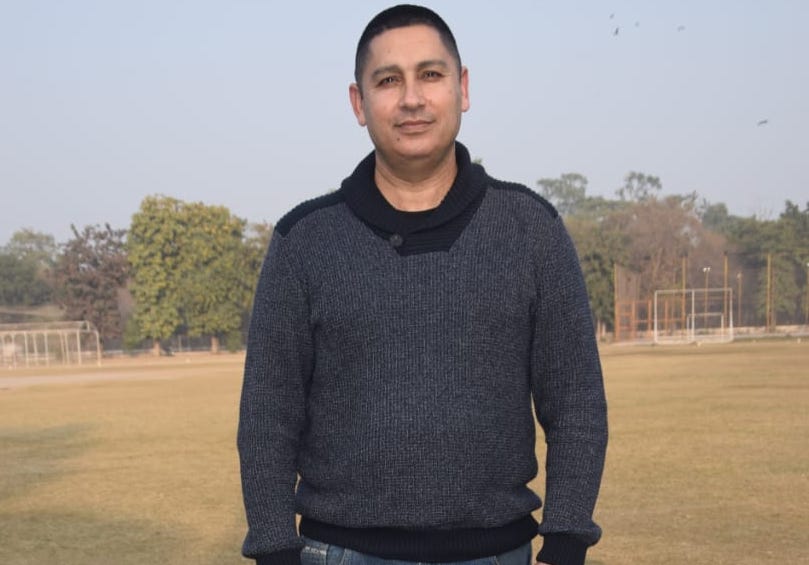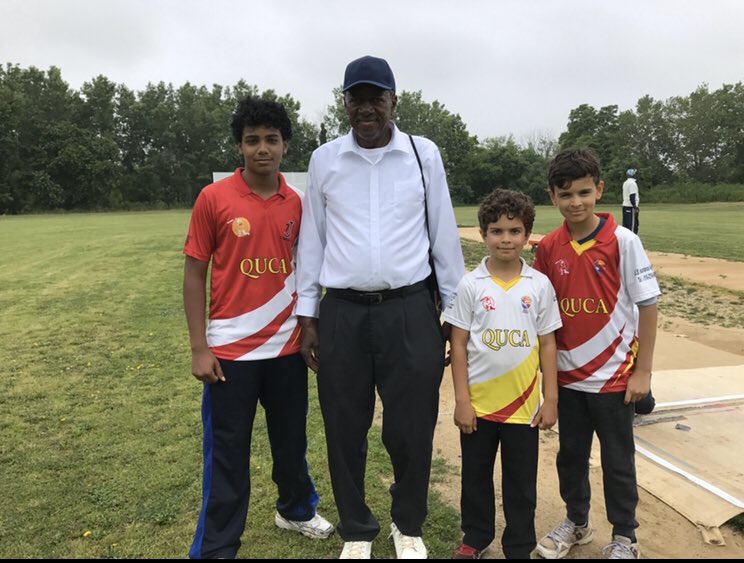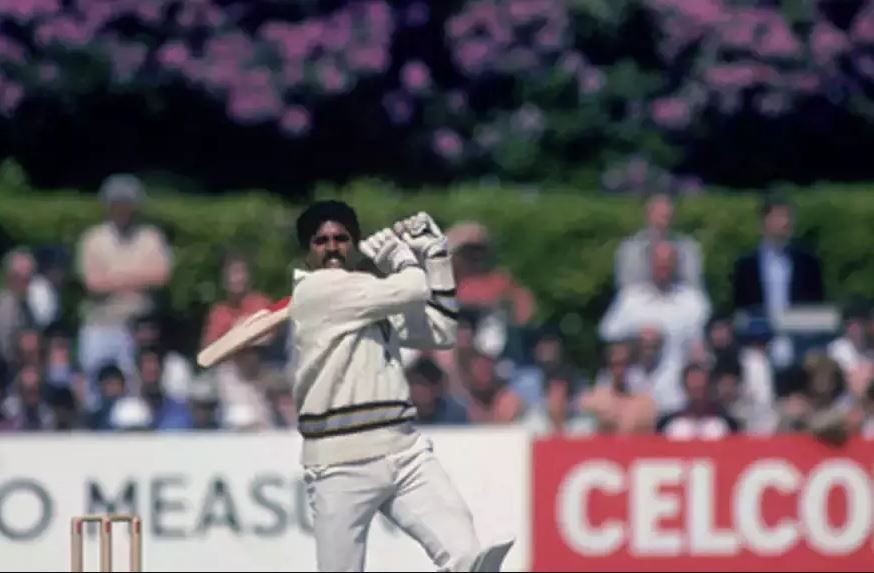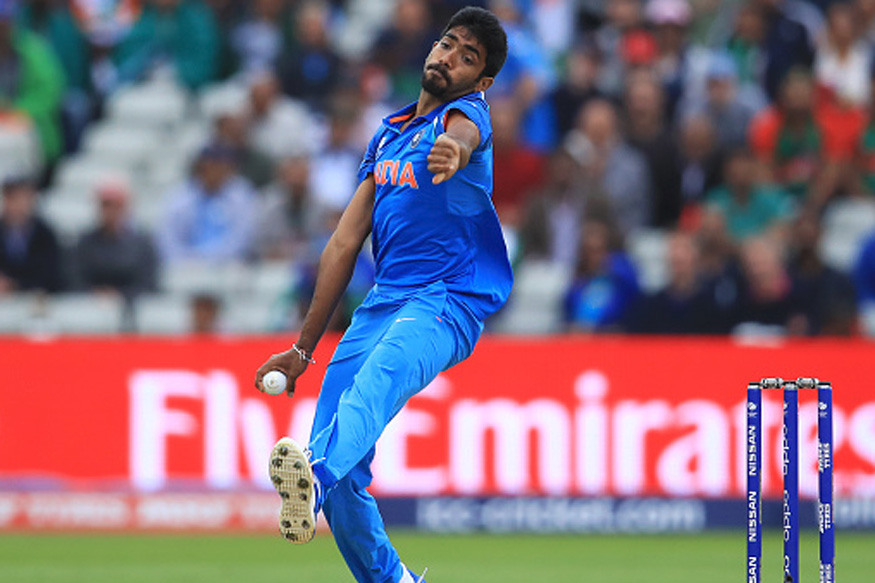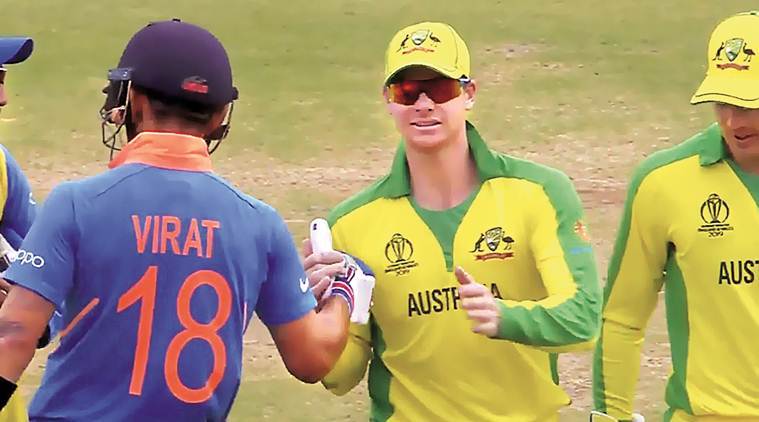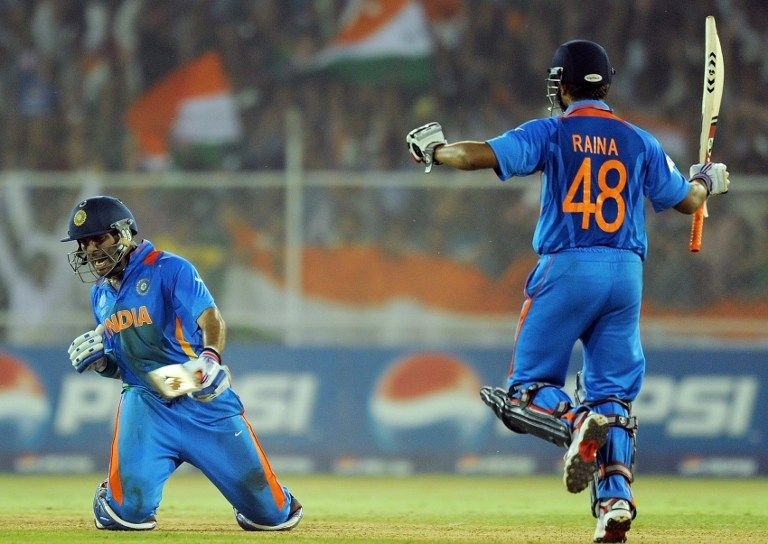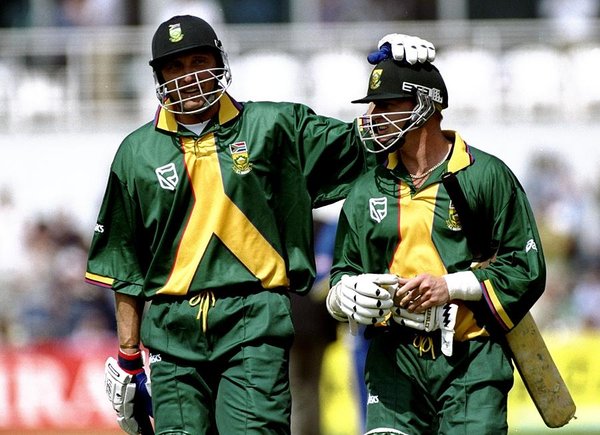
Wasim Akram is sitting by a window on the 11th floor of a hotel room in Toronto, but he is imagining himself at the top of his bowling mark on a hot afternoon, with a belter of a pitch laid out for a T20 match. In this hypothetical game, Wasim has the new white ball in his hands and is up against two of the most dangerous batsmen in world cricket: Chris Gayle and David Warner.
Up in the hotel room, Wasim is sporting all black: a Nike T-shirt, a pair of shorts, and a 2XU cap. On his left wrist is an Apple watch – also black – and one wonders if the manufacturer is aware of the magical wrist around which their gadget is wrapped. That wrist. Containing more inventiveness and sorcery than any tech company has yet invented. Or maybe not, but that’s probably how cricket fans of a certain vintage would like to think of it.
The first thing Wasim says when informed of who he would be bowling to: “Umm. They are both left-handers, so that’s a plus for me. I felt really comfortable bowling to left-handers because of the outswing I used to bowl.” The “umm” at the start of his response wasn’t an uncertain “umm”, by the way. It was an “umm” to activate the gears in his brain, to prime himself for the imaginary contest. An ultra-competitive “umm”, one that was hatching a plot.
Of course, this is not reality. This is 53-year-old Wasim talking about a made-up scenario. And it’s only natural that the competitiveness gives way to a mature assessment. “Both are giants of modern cricket. Chris Gayle is the biggest hitter. He hits long, he hits big, he is a big dude. And David Warner, one of my favourite players… the way he pulls, hooks, and hits on the up…”
This switch occurs all through the interview. Wasim seamlessly slips in and out of his role of a fast bowler taking on some of the best batsmen. One moment he is a shrewd craftsman in the thick of the contest; the next he is more measured, bringing forth some perspective.
“Starting out, I would have warmed up properly, because against these guys you can’t just rock up and bowl your first delivery. In T20 you don’t have time.
“First six overs – I would have bowled it on middle and going away. No variations. Just outswing from middle stump, going away.”
The man who could bowl six different deliveries in an over is reminding us that he was also a master at bowling one delivery six times. Using the crease to change the angle. Altering the extent of swing. Yet, a ball that looked just like the last one. There was nothing straightforward about Wasim “pitching on middle and going away”. It was a lethal tactic in itself.
But wouldn’t he, just for a ball or two, have tried to hurry Gayle up by targeting his ribcage?
“Again, that’s taking a risk, because you are only allowed two fielders outside the circle, and I would have had fine leg up and square leg maybe just in front of the leg umpire. And it would have been the same field for Warner.
“The idea would have been just to bowl outswing from middle and leg and let them play towards third man. I would have kept it back of a length. Not length.
“Warner would have probably charged at me. As a bowler you need to keep an eye on what the batsman is trying to do till the last moment. Nowadays bowlers tend to forget that when they run in. Are the batsmen using the crease? Are they charging? Are they giving themselves room? That’s how you change your length and bring in the variations.”
Don’t be fooled into thinking that this is a defensive strategy. Wasim is quick to point out that he is always looking for wickets.
“It doesn’t matter which era you play in. Wickets are the only way you can contain. Restricting the batsmen to six runs in the first over may look okay but in the next over they will hammer the other bowler. Giving ten runs and taking a wicket – I’ll take that any day.”
****
At times during the interview, when Wasim is explaining his method, he holds up an imaginary ball – index and middle finger dart-straight and pointing up – and mimes how he would manipulate it. For those magical moments, the left wrist is the hood of a snake – curving in and curving out, just as the ball would when following his command.
The imaginary game is now in its tenth over, with the opposition at 82 for 2. Virat Kohli and Jos Buttler are out in the middle and Wasim has been brought back for one over, to get a wicket.
“Ah ha ha ha ha,” he goes when told the scenario, before the seriousness kicks in.
“Okay. It depends on the pitch, on the conditions. If it is reverse-swinging, I would have been comfortable. I probably would have gone around the wicket to Virat and just bowled these awayswingers from middle. And Jos Buttler – probably, I’d have gone over the wicket, had third man up and bowled the slower ball just outside off stump.
“Easier said than done, though. Two dangerous players, two match-winners. And all these batsmen – Warner, Gayle, Virat, Buttler – they would have been great 20 years ago as well.”
Any chinks he would have tried to exploit against these two batsmen?
“It depends on what sort of form they are in. Have they just walked out to bat? Are they well set? You have to assess everything and have your best fielders where their favourite shots go. All these little details matter.
“Nowadays bowlers tend to forget this. When I coach bowlers, I tell them, ‘Before every delivery just have a quick glance around the ground and check where your fielders are. Is that where you want them to be? It’s not the captain’s job. It’s the bowler’s job. Because you’re the one who is going to deliver the ball and you know where you are going to bowl. So that’s how you decide where to have your fielders.”
It feels cruel to limit Wasim to one-over spells – like asking Picasso to paint on a Post-It note – but that is a limitation of the format after all. So we must again take him out of the attack and leave his final overs for the death. An apt name for the end overs, as far as Wasim went. For that was when toes, boots, batsmen’s balance, their dignity even – all faced a mortal threat.
Wasim returns for overs 18 and 20. Facing him: Andre Russell, and MS Dhoni in his prime.
“Both are match-winners. Big hitters. Finishers. I would have asked my square-leg fielder or point fielder for a sign – to tell me if the batsmen are standing inside the crease or outside. That matters a lot.
“If they are inside, you have to bowl slightly fuller. Maybe a low full toss. If they are outside the crease, then you bowl a different length.
“If it’s swinging, then it would have been slightly easier for me. I’m not saying I would have been okay with it, but at least I would have had more confidence. If it was swinging, it would have been trouble for the batsman, but again, these two, in the last two overs, they would have been winners most of the time.”
Would he have fired in yorker after yorker?
“To Russell, I would have had fine leg back and slightly wider, square leg in front of the umpire, and a deep midwicket. I would have bowled inswing into his pads. Not starting from outside off but starting from middle stump into his pads. Sometimes the best thing a bowler can do is to give the single and get the other batsman to face you.”
And what of the other batsman?
“For Dhoni – I would have bowled outswing yorkers, not inswing. Because if anyone bowled inswing to him, he would have gone there (points to midwicket) with his famous helicopter shot. With the awayswinger, I have a chance. Probably he would have top-edged… ”
****
The imaginary game has lasted a mere ten minutes but Wasim has held the room in thrall. The two cameramen, a photographer, and the two interviewers – all rapt in attention. It has given us a glimpse into his thought process as a bowler, but also a hint of what a good captain he must have been: ever alert, adjusting his field depending on the batsman on strike and the game situation, signalling to his team-mates and inspiring them with his magnetic personality.
There is one aspect of the game we haven’t touched on, though. Surely he would have fancied himself as a batsman in T20s? Making room, charging the bowlers, lofting and slapping the ball?
Wasim chuckles and swats the questions aside. “I would have been handy in the last couple of overs,” he laughs. “Just go in there and whack it… whack it towards midwicket.” He laughs some more.
And with that the game is done.
Wasim Akram is brand ambassador for the GT20 Canada.
This piece was first published in ESPNcricinfo.
